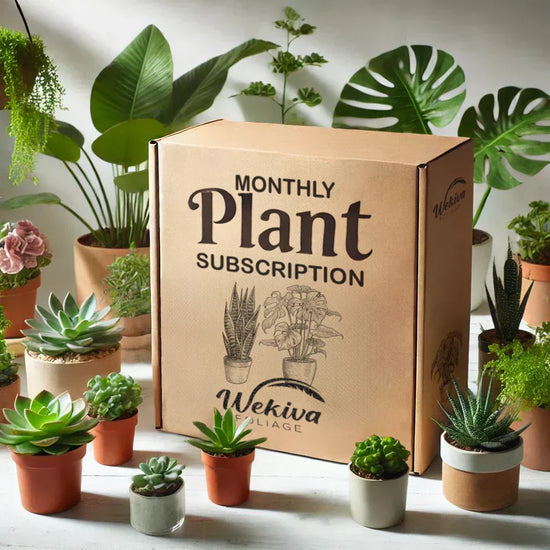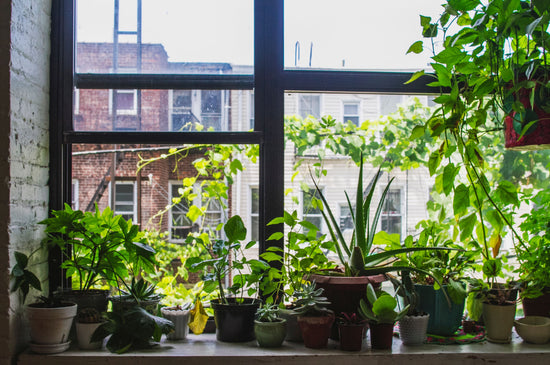Why Are Houseplant Leaves Turning Yellow? Causes and Solutions
Yellowing leaves on houseplants can be concerning for plant enthusiasts, as they often signal that something isn’t quite right. While occasional yellowing is normal as plants age, consistent or widespread yellow leaves can indicate issues with care or the plant's environment. Here’s a detailed guide to understanding why houseplant leaves turn yellow and what you can do to fix the problem.
Common Reasons for Yellowing Leaves
1. Overwatering
Overwatering is the most common cause of yellowing leaves. When the roots are waterlogged, they can’t take in oxygen, leading to stress and yellowing foliage. Signs of overwatering include soggy soil and a rotting smell from the pot.
- Solution: Let the soil dry out between waterings, and ensure your pot has proper drainage.
2. Underwatering
On the flip side, underwatering deprives plants of the moisture they need, causing leaves to turn yellow and brittle.
- Solution: Check soil moisture regularly and water your plant when the top inch feels dry.
3. Lack of Nutrients
Plants need essential nutrients like nitrogen, magnesium, and iron to maintain healthy leaves. A deficiency in these nutrients often leads to yellowing.
- Solution: Use a balanced houseplant fertilizer every 4–6 weeks during the growing season.
4. Improper Lighting
Too much or too little light can stress your plants. For example, low-light plants like peace lilies may yellow if exposed to direct sunlight, while light-loving plants like fiddle leaf figs yellow in insufficient light.
- Solution: Adjust the plant’s location based on its light requirements and supplement with grow lights if necessary.
5. Temperature Stress
Extreme temperature changes, whether from drafts, heating vents, or air conditioning, can cause leaves to yellow and drop.
- Solution: Keep your plants in stable environments, away from direct temperature fluctuations.
6. Pests and Diseases
Infestations of pests like spider mites, mealybugs, or aphids can weaken your plant, leading to yellow leaves. Similarly, fungal or bacterial infections can cause discoloration.
- Solution: Inspect plants regularly for pests and treat infestations with neem oil or insecticidal soap. For diseases, remove affected parts and adjust watering habits.
7. Natural Aging
It’s natural for older leaves at the base of the plant to turn yellow and drop as the plant grows.
- Solution: Simply remove the yellow leaves to keep the plant looking fresh.
Preventing Yellow Leaves on Houseplants
- Water Wisely: Always check soil moisture before watering. Overwatering is a bigger risk than underwatering for most houseplants.
- Provide Proper Light: Research the light requirements for each of your plants and place them accordingly.
- Fertilize Regularly: Use a plant food specifically designed for houseplants to avoid nutrient deficiencies.
- Control Pests: Keep a close eye on your plants, especially new ones, to catch infestations early.
- Repot When Needed: Repot your plants every 1–2 years to prevent root crowding and refresh the soil.
Best Plants for Low-Maintenance Care
If you’re looking to avoid yellowing leaves altogether, consider hardy houseplants that tolerate a range of conditions:
- Snake Plant (Sansevieria): Almost indestructible and tolerant of neglect.
- ZZ Plant (Zamioculcas zamiifolia): Thrives in low light and requires infrequent watering.
- Pothos (Epipremnum aureum): Great for beginners and tolerates a variety of conditions.
- Spider Plant (Chlorophytum comosum): Known for its adaptability and easy care.
FAQs About Yellow Leaves on Houseplants
Q: Can yellow leaves turn green again?
No, once a leaf has turned yellow, it won’t regain its green color. Focus on improving the plant’s care to prevent further yellowing.
Q: Should I remove yellow leaves?
Yes, remove yellow leaves to direct the plant’s energy toward new growth.
Q: How do I know if my plant is overwatered or underwatered?
Check the soil. Overwatered soil will feel wet and soggy, while underwatered soil will feel dry and pull away from the pot’s edges.
Q: Are some plants more prone to yellowing leaves?
Yes, sensitive plants like ferns or calatheas may yellow more easily due to environmental changes.
For a wide variety of stunning houseplants, including snake plants, peace lilies, and pothos, visit our Houseplants Collection. Proper care ensures your plants remain healthy and vibrant all year round.





